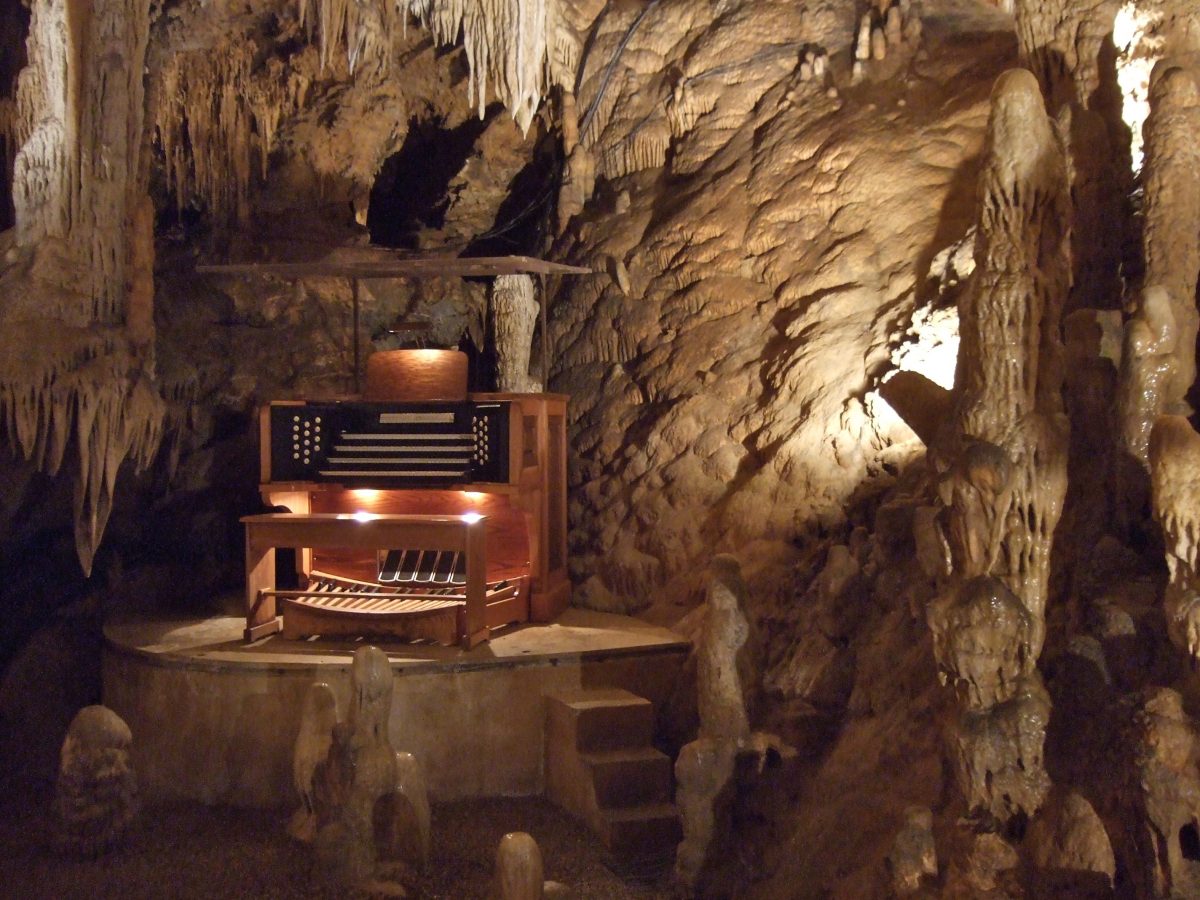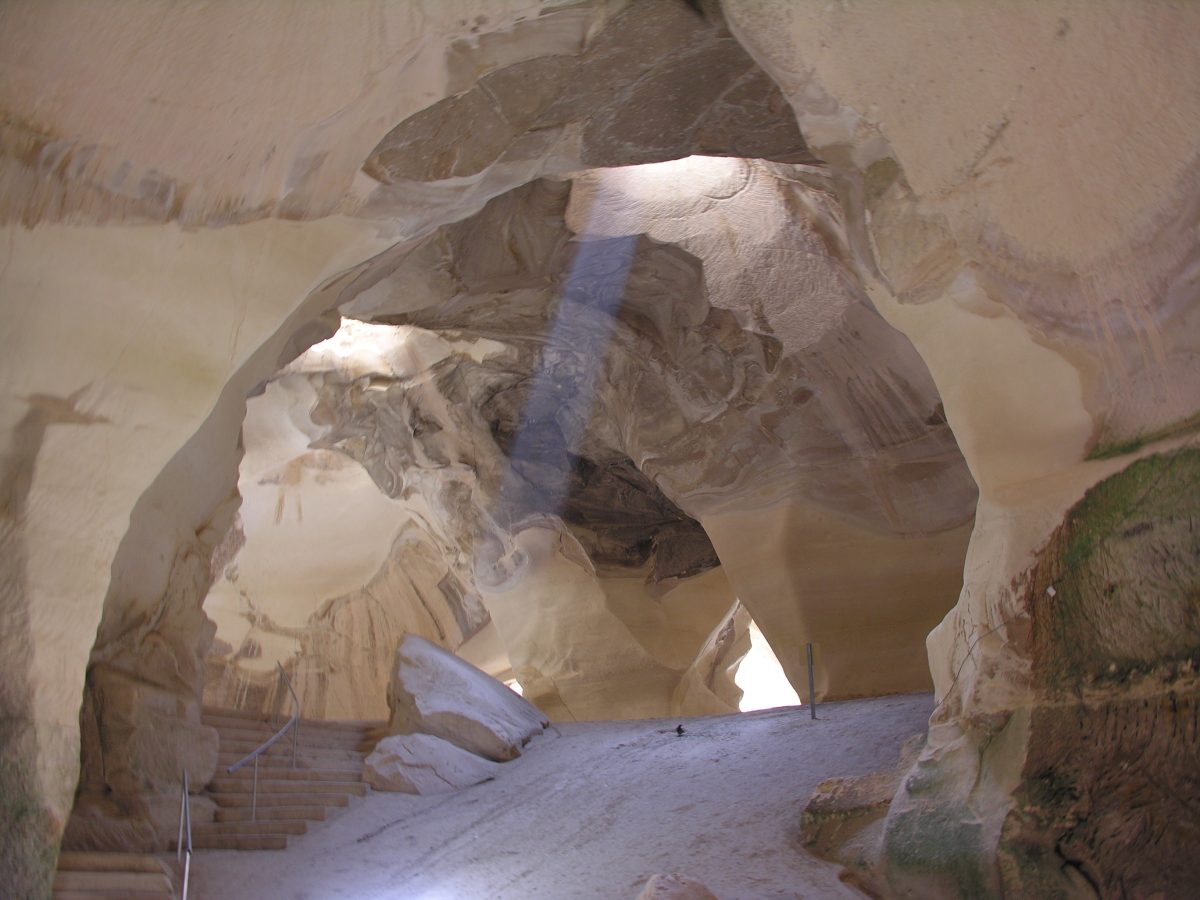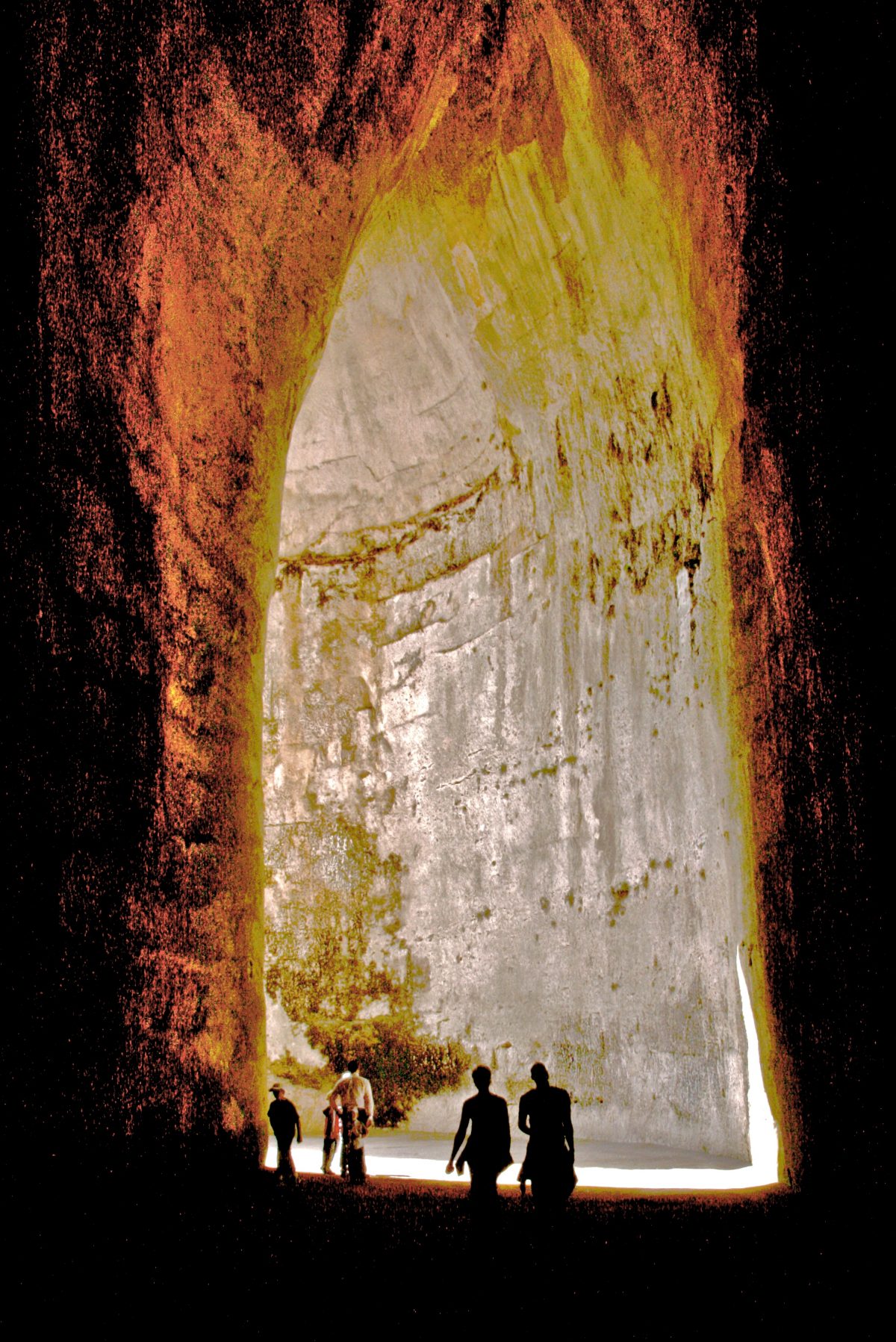This is a bizarre musical instrument. It was dreamt up and painstakingly constructed by Leland Sprinkle, a mathematician and electronic engineer in the 1950s. Rocks that ring have been used as musical instruments for thousands of years. But this is the only lithophone I know of based on stalactites.

It’s claimed to be the largest natural musical instrument in the world, generating a beautiful, ghostly and disorientating sound. The cave acoustics make it difficult to locate where the sounds are coming from. 37 stalactites produce the different notes of a musical scale. But the tuning isn’t entirely natural, as some sanding of the natural formations was needed to get the notes exactly in tune. Small rubber hammers strike the stalactites; these are electronically controlled by an organ keyboard.
Locations and logistics
Luray Cavern’s website with opening hours etc.
Credits and sources
- Sound released by Luray Caverns into public domain
- Photo: KristopherM (c) some rights reserved
- Photo:lossanjose (c) some rights reserved





